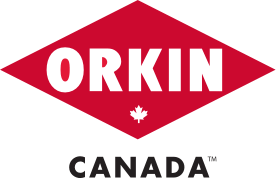Identification
- Colour Red, black, or brown
- Size From 4.5 mm to 13 mm long
- Description Harvester ants have a fringe of hairs lining the underside of the surface of the head.
How to identify Harvester Ants
Prevalent throughout North America, harvester ants belong to the genus Pognomyrmex and are generally known for their seed-collecting behaviour and the painful sting they impart. The scientific genus name of these insects means “bearded ant,” which alludes to the fringe of hairs called psammaphore that lines the underside of the surface of the head. Harvester ants use the hairs to carry soil and seeds, though not all species of pogonomyrmex ants possess the feature.
Signs of an infestation
The most common sign of a harvester ant infestation is often the areas of stripped vegetation that surround the nests and mounds. Certain species have been known to build mounds as large as a metre high and five metres across. As the insects are not known to enter homes except to occasionally forage for new food sources, human contact sometimes only occurs when people are stung by the pests.
Harvester Ants Removal
Controlling harvester ant infestations without professional assistance may prove difficult due to the potentially large size of the colony and the stinging capabilities of the insects. Experienced pest control professionals, however, have the training, know-how, and access to the most effective treatment options to eliminate harvester ants safely and properly.
How to prevent Harvester Ants from invading
Since harvester ants do not infest homes, the implementation of preventative measures may not even be necessary. Selective treatment of exterior sites with appropriate insecticide may help keep the insects from building nests in the yard. Other steps may be taken just in case, such as sealing cracks and crevices, repairing window and door screens, and keeping vegetation and mulch away from the foundation of the home.
Habitat, Diet, and Life Cycle
Habitat
Found throughout the United States, certain species of harvester ants also live in Canada, including the red harvester ant. The insects build nests in the soil and prefer to live in open areas, such as plains. Their nests typically have a single opening surrounded by an area stripped of vegetation that measures up to 2 m in diameter.
Diet
Harvester ants mainly feed on gathered seeds. They also eat other small insects and arthropods, dead or alive.
Life Cycle
Like other ant species, harvester ants mate by swarming. Queens and males known as alates, or winged ants, typically swarm in late summer. Males die after mating, while the females detach their wings, dig new nests, and deposit the eggs that will hatch into larvae before eventually developing into workers. The workers then take over maintaining the nest and feeding the new larvae that the queen produces. Some nests may eventually grow to include thousands of harvester ants.
Commonly Asked Questions
Why do I have harvester ants?
Harvester ants build nests in the soil and prefer to live in open areas, such as plains, lawns, and playgrounds. They feed on gathered seeds and also eat other small insects and arthropods, dead or alive. They rarely enter human homes, preferring to take up residence in gardens.
How worried should I be about harvester ants?
Harvester ants have a painful sting that may lead to anaphylactic reactions in both humans with known allergies and animals that come into contact with nests.
These pests can damage crops and affect land used for grazing animals. When building their nests, they severely strip away vegetation, which can contribute to soil erosion. Harvester ant nests located near roadways have also been known to cause potholes.
Controlling harvester ant infestations yourself may prove difficult due to their stings and to the potentially large size of the colony. Some species have been known to build mounds as large as a metre high and five metres across.
Selective treatment of exterior sites with appropriate insecticide may help keep harvester ants from building nests in your yard, but to be sure of protecting your family from stings and your crops from damage, you may need a professional pest control service.
Other pests related to Harvester Ants
100% Satisfaction or Money Back Guarantee
Resolving your pest problem is our #1 priority. If re-treatment is required, we'll provide immediate services at no extra cost. If your expectations are not met, we guarantee a full refund of your service payment.
Remove pests from your home, and stop them from coming back
We work hard to listen, understand and assess your unique situation. Request a free, no-obligation estimate today for a customized pest program that fits your needs.
Request a Free Home EstimateRequest a Free Business Consultation

